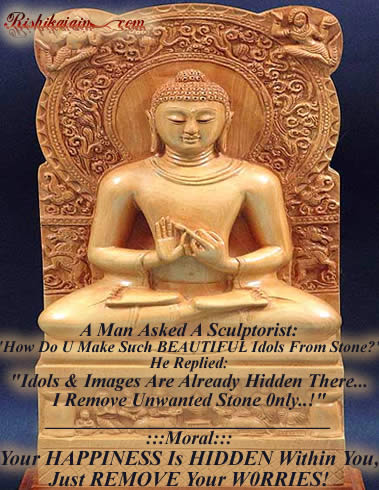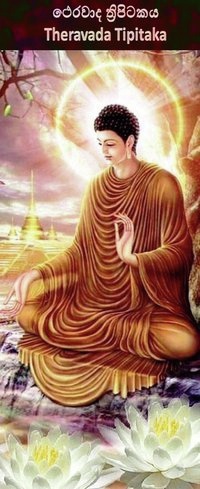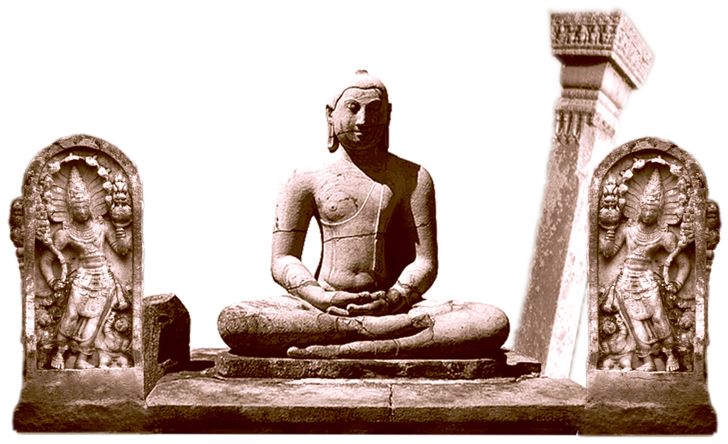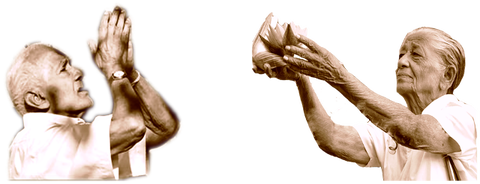934 LESSON 29-05-2013 WEDNESDAY-FREE ONLINE eNālāndā Research and Practice UNIVERSITY
மற்றும்
பன்னிரண்டாகவுள்ள மண்டலங்கள்
சுருக்கமான வரலாற்று முன் வரலாறு
ஸுத்தபிடக
வினயபிடகே
அபிதம்மபிடக
புத்தசமய நெறி முறைகளின் பன்னிரண்டாகவுள்ள மண்டலங்கள்
புத்தசமய நெறி முறைகளின் ஒன்பது மண்டலங்கள்
TIPITAKA-ஸுத்தபிடக-Section-A
TIPITAKA
TIPITAKA AND TWELVE DIVISIONS
Brief historical background
Sutta Pitaka
Vinaya Pitaka
Abhidhamma Pitaka
Twelve Divisions of Buddhist Canons
Nine Divisions of Buddhist Canons ![]() through http://sarvajan.ambedkar.org
through http://sarvajan.ambedkar.org![]()


http://www.tipitaka.net/community/news.php?page=130524e1
United Nations
Department of Public Information • News and Media Division • New York
Secretary-General, in Message, Calls Vesak Day Occasion to Examine
How Buddhist Teachings ‘Can Inform Our Response to Prevailing
Challenges’
Following is UN Secretary-General Ban Ki-moon’s message for Vesak Day, to be observed on 24 May:
Vesak Day is a celebration for Buddhists worldwide and an opportunity
for all members of the international community to benefit from their
rich traditions. This year’s observance, falling at a time of widespread
strife and misery, is an occasion to examine how Buddhist teachings can
inform our response to prevailing challenges.
Confronting the troubling problems facing our world is consonant with
Buddhism. The Buddha himself, as a young prince, left the safety of his
palace to discover the four sufferings of birth, sickness, old age and
death. While such painful realities cannot be avoided, Buddhism offers
insights into how to cope with them. Its history is replete with
inspiring examples of the transformative power of Buddhist philosophy.
The legendary King Ashoka, a conqueror who presided over a brutal
reign in India some three centuries after the Buddha’s passing,
ultimately converted to Buddhism, renounced violence and embraced peace.
The values that King Ashoka espoused, including human rights,
democratic governance and respect for the dignity of life, are common to
all great religions. The fact that he was able to embrace them after
years of brutal war offers proof that the goodwill of individuals can
end widespread suffering.
Now more than ever, we need the spirit of non-violence to help
inspire peace and quell conflict. I offer my best wishes to believers
celebrating Vesak Day, and my sincerest hopes that we may all draw on
spiritual ideals to strengthen our resolve to improve our world.
source: http://www.un.org/News/Press/docs/2013/sgsm15031.doc.htm
VOICE OF SARVA SAMAJ
AHRC-FOL-006-2013 May 27, 2013
Duleep de Chickera to the Buddhists of Sri Lanka
Buddha
Brothers
letter to Christians on his understanding of Christ at Christmas last
year. This has prompted me to reciprocate with this letter to you at
Wesak.
Buddhism and one who perceives the universal wisdom and values in world
religions as gifts for all and not just the adherents of a respective
religion.
an expression of my profound respect for the Buddha and the potential I see in
the Dhamma for compassion, contentment and coexistence for all life. I
know you will be patient with any shortcomings in my perception of
Buddhism.
life
living beings; and not humans only. This all inclusive compassion makes sense,
since compassion for humans only, if accompanied with disrespect for other
forms of life upsets the balance in an interdependent life system.
Consequently compassion for humans only, is short sighted and
counter-productive; it inevitably induces chaos for all forms of life,
including humans.
on critical human relations such as ethnic discrimination, inter-religious
tensions, economic injustice, political intolerance and the collapse of
ethical norms that we wrestle with today. Since compassion according to the
Buddha is never selective and will not endorse divisive and oppressive
systems, it is full of potential to transform these exclusive and destructive
trends into a just and integrated system for all life.
Tanha
cycle of life in the four noble truths, most enlightening. His discernment of
Tanha as the cause of suffering is a precise explanation of the human
dilemma. The inordinate greed for power, dominance, wealth and material
resources that motivate many, leads to aggression, suppression and suffering
which eventually destroys all; the greedy, the content and Mother
Earth.
path ranges from the simple life style, which demonstrates contentment; to
detachment, that state of selflessness which rises above the enticement of the
market, the arsenal and a false sense of prestige and is undoubtedly a sign of
true liberation.
total renunciation; the ability to point to the way by getting out of the way.
This profound insight into self-emptying is an indispensable lens for personal
and social evaluation which our leaders and people cannot afford to
ignore.
fruit in Ahimsa, (transforming non-violence) safeguards personal
privacy and prevents social aggression. Just as the Dhamma cannot be
subject to force or manipulation to bring enlightenment, recipients of the
Dhamma cannot indulge in these tendencies and to the contrary strive to
overcome them. This, in my understanding, is how surrounding forms of life are
respected and the Dhamma shared with dignity in ever widening
circles.
that has made Buddhism a world religion. Consequently it is those who are the
vehicles of this enlightened, non-violent and compassionate teaching who will
continue to sustain and commend Buddhism today.
Compassionate One, shed enlightenment and emancipate our beloved Sri Lanka from greed and violence.
beings.
Chickera
http://www.tipitaka.net/community/news.php?page=100808e5
Two-way bilingual system
G.H. Asoka
The use of several languages as medium of instruction was
common in Buddhism based education in Sri Lanka during ancient times.
The model more or less used in ancient Sri Lanka in its
multilingual educational context reflects characteristics of the model
called two-way bilingual education: teaching the same content in both
languages: first in the known language and then in the target language
with the use of ample supplementary material.
From the time of the King Dutugemunu the formal method of
teaching followed by the Religion Ministries established throughout the
country was composed of three stages in its procedure in Dhamma Desana
according to Manorathapurani, the commentary to Anguttara Nikaya.
At the first stage, a priest or an educated layman called Diva
Katika Thera preached bana during the day time using mother tongue.
Then the reciter of the words called ‘Padabhanaka’
explained the same, especially in relation to words/vocabulary: this
situation might have created the opportunity to explain semantically
important aspects related to the concepts depicted in lexemes
(vocabulary). Finally the Chief Preacher preached the Doctrine in
detail: this third stage might have been the core of the lesson with
theories (doctrine) supported by the first two stages which reflects
the possibilities of understanding through language transfer.
In addition to using mother tongue mixing it in various
percentages in the three stages of Damma Desana, it is possible to find
evidence for using various other measures to enrich religious education
through practices related to bilingual or multilingual education.
Commentarial literature consisting three types of Sihalatthakatha is
one among many such used at the beginning.
There were numerous parallel passages available in Sinhala to
Pali Canon, and at the outset, mainly available as oral exegetical
material in early Prakrit tradition in Sri Lanka.
They can be interpreted as adaptations which are used nowadays
in bilingual education when localizing and appropriating learning
contexts written in another language. These commentaries were first
developed to explain the intricacies of the Buddhist doctrine during
the life time of Arhath Mahinda himself.
Samantapasadika mentions that there had been three types of
Sihalaatthakata, Maha (Mula) Atthakatha, Maha Pacccari Atthakatha and
Kurundi Atthakatha which are not physically available today since the
time that Ven Buddhagosha had finalized his retranslations
(subcommentaries) in Pali.
Mahaatthakathanceva
Mahapaccarimevaca,
Kurundincati tissopi
sihalaatthakatha ima.
According to the senior lecturer of the Sinhala Department,
Colombo University, Agalakada Sri Sumana Thera after retranslations of
Sihala Atuwa by Buddhagosha Thera, palm leaf manuscripts high up to the
height of five elephants, were destroyed. These commentaries developed
first in Sinhala can be interpreted as explanations or first
supplementary material to the content available in Pali.
Ample evidence
The content of this supplementary material in Sinhala
consisted of three components: explanations of difficult words and
phrases of the Pali Canon, doctrinal interpretations and judgements on
disputed points of ecclesiastical law.
Today these Sihalattakatha are no more there: Only records are
available about them and retranslations by Buddhagosha Thera provided
ample evidence about them to the world.
Later new Atuwa (commentaries) and, Tika and Tippani developed
as sub-commentaries in Pali using Sihatthakatha have replaced the
latter (commentaries): ‘atuwa’ developed as
subcommentaries to Atthakatha had been introduced in Anuradhapura
period, and ‘Tika’ tradition was introduced in the
Polonnaruwa period. There are four major ‘Atuwas’
developed for Digha Nikaya, Majjima Nikaya, Samyutta Nikaya, and
Anguttara Nikaya. They were Sumangalavilasani, Papanncasudhani,
Saratthadeepani and Manorathapurani respectively.
Kuddaka Nikaya consists of 15 Atuwas. Sihala Atuwas were the
direct, original commentaries to what had been available in Pali.
‘Atuwas’ in Pali were subcommentaries developed
from Buddhagosha Thera’s work onwards linking Sihalatthakatha
with doctrines of Buddhism originally available in Pali.
The Atuwa written as commentaries in Pali and the
‘Tika’ and ‘Tippani’ developed
in Pali as subcommentaries were bridges between the Sinhala Atuwa and
doctrines originally available in Pali. When an
‘Atuwa’ was developed, three principles had been
followed: relevancy of its content to religious doctrines,
appropriation and localization and justification of the writer for his
interpretations. These three principles read the modern principles in
an adaptation, too.
‘Tikas’ were documents more or less
similar to glossaries nowadays, but with paraphrasing. It is evident
that the vocabulary had been given a prominent place in second or
foreign language learning.
Low competency in vocabulary in studying Thripitakaya is
similar to a blind elephant which walks step by step with doubt.
Classification of the supportive material (supplementary) of
ancient literary works in Sinhala to the Pali and Sanskrit literature
were found in seven types of texts: Vyakyana (explanatory texts to
explain Pali literature), Gadya (prose texts), Padaya (Verse texts),
Chandolankara (rhetorical texts), Waidya and Jotis (medical and
astrological texts), Vyakarana (grammatical texts) and Kosa (lexicons).
These seven types of literary and language texts have been
used for bridging the difficulty-gap between Sinhala and Pali and
Sinhala and Sanskrit using the known language-support for understanding
the content written in another foreign language (Pali and/or Sanskrit).
Agalakada Sumanasiri Thera mentions several types of
vyakyanas: ‘getapda’ which provided meaning for
difficult words, ‘Sanya’ which provided meaning for
all the words in a text, ‘Parikatha’ that provides
details for a selected number of words as a critique (the best
‘Parikatha’ is Dharmapradeepikawa composed by
Gurulugomi with the nature of a literary work written by an eminent
scholar of the 12th Century AD, and the first text on Sinhala
literature with explanations for difficult words of the Dhammapada
Atthathakatha available in Pali), ‘Winisa’ which is
a complete critique to a text and, ‘Pitapoth’ which
is an addition to a previously produced text by the same author.
Educational purposes
He has identified that the ‘Sanya’
developed by the King, Pandith Parakramabahu II of Dambadeniya era who
was awarded the title ‘Kalikala Sahitya Sarvangna Pandit for
his erudition, is the most significant ‘Sanya’.
These efforts indicate ancient Sri Lankans’ efforts of using
their bilingual or multilingual capacities for expanding education
using language and language related talents to promote cognition based
on Buddhist doctrines.
Localization of Buddhism
Later with the development of communication in Sinhala in its
use in secondary skills with the influence of its mother languages,
Pali and Sanskrit, retranslations from Sinhala to Pali were introduced
as both commentaries and sub-commentaries because of deviations found
in religious aspects due to use of idiomatic expressions when
appropriation and localization of Buddhism in Sri Lankan context.
In addition, few other linguistically important reasons also
caused the need for retranslations (adaptations) in Pali: importance of
Pali over Sinhala out of the country for popularity of Theravada
Buddhism and the contemporary use of Pali as a world lingua franca.
Sararthadeepani and Rasavahini by Vedeha Thera in the 12th
Century AD are some such sub commentaries rewritten in Pali to Sinhala
and religious content.
Thus both commentaries in Sinhala and sub-commentaries in Pali
had been available side by side for educational purposes up to the 12th
Century AD. Yet absence of the Sihala Atuwa from the 5th Century AD to
10th Century AD in macro use in education in the country might have
closed paths for Sinhala language to be developed in its literature and
use of it among the erudite in the presence of using Pali as a lingua
franca.
When studying this situation, it can be interpreted that
Buddhism based and Buddhism related education in the ancient Sri Lanka
had been in a model reflecting bilingual education which caused
plurilingualism (individual capacity of using several languages) and
biliteracy (capacity of using several languages for reading and
writing) which in return reflect additive aspects of bilingual
education.
Thus it is clear that bilingual or multilingual education and
its various characteristics in pedagogy and androgogy are not something
totally new for today’s Pirivena Education: it had been in
the country since formal education under traditional authority was
established with introduction of Buddhism and practices such as
extensive use of rote learning, discussions and lecture method.
Use of Sinhala
Pali or Sanskrit which had been foreign languages by that time
had not been used as the medium of instruction for learning Pali and
Sanskrit or content of Buddhism.
Instead Sinhala had been used with its developments for using
it in secondary skills, reading and writing with the emergence of
Sinhala script in the Eighth Century AD as a result of undergoing a
process of slow evolution. Consequently learners were able to shift
from the known to the unknown, the unfamiliar to the familiar, the
simple to complex and from the general to specific in education.
Thus there had been balanced bilingualism among the erudite or
the learnt with positively addressing relevant cognitive demands. Yet
equity of access to education was an issue in the past.
The writer is National Institute of Education Language
Coordination Unit’s Head of the Languages, Humanities and
Social Sciences
source: http://www.dailynews.lk/2010/06/08/fea03.asp
Buddhist News Features:
Friday, May 24, 2013 Vesak Extra!
UN: Buddhist teachings can inform our response to prevailing challenges
Saturday, May 5, 2012 Vesak Extra!
UN: Buddhist belief offers insight to improve world conditions
Tuesday, May 17, 2011 Vesak Extra!
UN: Apply universal values of Buddhism to end worldwide suffering
ஸுத்தபிடக, புத்தர்
பெரும் அளவு அவரே வெவ்வேறு
சந்தர்ப்பங்களில் வழங்கிய போதனைகள் உளதாகும். ஒரு சில
போதனைகள் அவருடைய மேன்மைதங்கிய கெளரவம் நிறைந்த சீடர்களால்ல கூட
வழங்கப்பட்டுள்ளது (எடுத்துக்காட்டு.ஸாரிபுத்தா,ஆனந்தா,மொக்கல்லனா)
அவற்றில் உள்ளடங்கியுள்ளது. விவரமாக எடுத்துக்கூறி வெவ்வேறு
சந்தர்ப்பங்களில் மற்றும் வெவ்வேறு நபர்கள்
மனப்போகிற்குப் பொருந்தும் பிரகாரம் நீதிபோதனைகள் விவரமாக எடுத்துக்கூறி
அதில் உள்ளடக்கியதால் அது ஒரு மருந்துக் குறிப்பு புத்தகம் போன்றதாகும்.
முரண்பாடானது என்பது போன்று அறிக்கைகள் இருக்கக்கூடும், ஆனால் அவைகள்
தறுவாய்க்கு ஏற்ற புத்தர் கூற்று என்பதால் தவறாகத் தீர்மானிக்க
வேண்டியதில்லை. இந்த பிடக ஐந்து நிகாய அல்லது திரட்டுகள் பாகங்களாகப் பிரிப்பட்டுள்ளது. அதாவது:-
The
Sutta Pitaka consists mainly of discourses delivered by the Buddha
himself on various occasions. There were also a few discourses delivered
by some of his distinguished disciples (e.g. Sariputta, Ananda,
Moggallana) included in it. It is like a book of prescriptions, as the
sermons embodied therein were expounded to suit the different occasions
and the temperaments of various persons. There may be seemingly
contradictory statements, but they should not be misconstrued as they
were opportunely uttered by the Buddha to suit a particular purpose.
This Pitaka is divided into five Nikayas or collections, viz.:-
திக்க (நீளமான) நிகாய (திரட்டுகள்)
புத்தரால் கொடுக்கப்பட்ட 34 நீளமான போதனையுரைகள் கொய்சகமாக்கப்பட்டது.
Dīgha Nikāya
[dīgha:
long] The Dīgha Nikāya gathers 34 of the longest discourses given by
the Buddha. There are various hints that many of them are late additions
to the original corpus and of questionable authenticity.
மஜ்ஜிம (மத்திம) (நடுத்தரமான) நிகாய (திரட்டுகள்)
புத்தரால்
கொடுக்கப்பட்ட 152 மத்திம ( நடுத்தரமான நீட்சி ) பல்வேறு வகைப்பட்ட
விஷயங்கள் செயல் தொடர்பு உடன் போதனையுரைகள் கொய்சகமாக்கப்பட்டது.
Majjhima Nikāya
[majjhima:
medium] The Majjhima Nikāya gathers 152 discourses of the Buddha of
intermediate length, dealing with diverse matters.
ஸம்யுத்த (குவியல்) நிகாய (திரட்டுகள்)
குவியல்
நிகாய (திரட்டுகள்) என அழைக்கப்படும் நெறி முறைக் கட்டளை ஆணை அவற்றினுடைய
பொருளுக்கு ஏற்ப 56 பங்குவரி குவியலாக கொய்சகமாக்கப்பட்டது. அது மூவாயிரம்
விஞ்சி மிகுதியாக மாறும் தன்மையுள்ள நீளம் ஆனால் பெரும்பாலும் ஒப்பு
நோக்காக சுருக்கமான நெறி முறைக் கட்டளை ஆணை நிரம்பியது.
Saṃyutta Nikāya
[samyutta:
group] The Saṃyutta Nikāya gathers the suttas according to their
subject in 56 sub-groups called saṃyuttas. It contains more than three
thousand discourses of variable length, but generally relatively short.
அங்குத்தர (கூடுதல் அங்கமான) (ஆக்கக்கூறு) நிகாய (திரட்டுகள்)
இறங்குதல்
காரணி, கருத்தைக் கவர்கிற, கீழ் நோக்கி அல்லது ஏறத்தாழ தற்போதைக்கு
உதவுகிற என அழைக்கப்படும் பதினொன்று பங்குவரி, ஒவ்வொன்று
கொய்சகமாக்கப்பட்டது நெறி முறைக் கட்டளை ஆணை கணக்கிடல் ஆக்கை ஒரு
குறிப்பிட்ட கூடுதல் ஆக்கக் கூறு எதிராக அவை முன்னோடி மாதிரி இறங்குதல்
காரணி. அது ஆயிரக்கணக்கான பெரும்பாலும் சுருக்கமான நெறி முறைக் கட்டளை ஆணை
நிரம்பியது. தன்னகம் கொண்டிரு
Aṅguttara Nikāya
[aṅg:
factor | uttara: additionnal] The Aṅguttara Nikāya is subdivized in
eleven sub-groups called nipātas, each of them gathering discourses
consisting of enumerations of one additional factor versus those of the
precedent nipāta. It contains thousands of suttas which are generally
short.
குத்தக (சுருக்கமான, சிறிய) நிகாய (திரட்டுகள்)
சுருக்கமான,
சிறிய நிகாய (திரட்டுகள்) வாசகம் மற்றும் ஆலோசனை மிக்க மாதிரி தணிந்த
இரண்டு படுகைகள் : தம்மபத (ஒரு சமய சம்பந்தமான முற்றுத் தொடர் வாக்கியம் ,
மூன்று கூடைகள் நூட்கள் ஒன்றின் பெயர் , தம்மாவின் உடற்பகுதி அல்லது
பாகம்), உதான (வார்த்தைகளால்,
மேல்நோக்கிய பேரார்வம், ஆவல் கொண்ட அல்லது
மகிழ்ச்சி கூற்று, சொற்றொடர் , உணர்ச்சிமிக்க உறுதலுணர்ச்சி, மகிழ்ச்சி
அல்லது மனத்துயரம் இரண்டனுள் ஒன்று), இதிவுத்தக ( இது குத்தகனிகாய நான்காம்
புத்தகம் பெயர்), ஸுத்த ( ஒரு சரம், இழை ,: புத்தசமயம், சவுகதநூல் ஒரு
பாகம்; ஒரு விதி, நீதி வாக்கியம் இறங்குதல் காரணி),தேரகாத-தேரிகாத(
தேராக்களுக்கு உரியதானது), மற்றும் ஒரு சரடு ஜாதக ( பிறப்பு , பிறப்பிடம் ,
ஒரு பிறப்பு அல்லது : புத்தசமயம் விவேகம் வாழ்தல் , ஒரு ஜாதக, அல்லது
புத்தரின் முந்திய பிறப்பு கதைளில் ஒன்று.)
Khuddaka Nikāya
[khuddha: short,
small] The Khuddhaka Nikāya short texts and is considered as been
composed of two stratas: Dhammapada, Udāna, Itivuttaka, Sutta Nipāta,
Theragāthā-Therīgāthā and Jātaka form the ancient strata, while other
books are late additions and their authenticity is more questionable.
இந்த ஐந்தாவது பதினைந்து நூட்களாக பிரிக்கப்பட்டுள்ளது:-
The fifth is subdivided into fifteen books:-
சுருக்கமான பாதை (சமய விரிவுரை)
Khuddaka Patha (Shorter Texts)
தம்மபத (மெய்ம்மை பாதை)
Dhammapada (The Way of Truth)
உதன (மனப்பூர்வமான முதுமொழி அல்லது ஓரசை நீண்ட நாலசைச்சீர்களான மகிழ்ச்சி)
Udana (Heartfelt sayings or Paeons of Joy)
இதி உத்தக (இவ்வாறாக அல்லது அவ்வாறாக கூறிய போதனைகள்)
Iti Vuttaka (’Thus said’ Discourses)
ஸுத்த நிபட (சேர்த்த போதனைகள்)
Sutta Nipata (Collected Discourses)
விமான வத்து (வானியல் குடும்பங்கள் தனித்தனியாகத் தங்குதற்கேற்பப் பிரிக்கப்பட்ட பெரிய கட்டிட கதைகள்)
Vimana Vatthu (Stories of Celestial Mansions)
பேடா வத்து (இறந்து போன,மாண்டவர் கதைகள்)
Peta Vatthu (Stories of Petas)
தேராகாதா (சகோதரர்கள் வழிபாட்டுப் பாடல்கள்)
Theragatha (Psalms of the Brethren)
தேரிகாதா (சகோதரிகள் வழிபாட்டுப் பாடல்கள்)
Therigatha (Psalms of the Sisters)
ஜாதகா (பிறப்பு கதைகள்)
Jataka (Birth Stories)
நித்தேச (விளக்கிக்காட்டுதல்)
Niddesa (Expositions)
பதிசம்பித (பகுத்து ஆராய்கிற அறிவு)
Patisambhida (Analytical Knowledge)
அபதான (ஞானிகள் வாழ்க்கை)
Apadana (Lives of Saints)
புத்தவம்ஸ (புத்தரின் வரலாறு)
Buddhavamsa (The History of Buddha)
சாரிய பிடக (நடத்தை முறைகள்)
Cariya Pitaka (Modes of Conduct)
Vinaya Pitaka
The Vinaya Pitaka mainly deals with the rules and
regulations of the Order of monks (Bhikhus) and nuns (Bhikhunis). It
also gives an account of the life and ministry of the Buddha. Indirectly
it reveals some useful information about ancient history, Indian
customs, arts, sciences, etc.
For nearly twenty years since his
enlightenment, the Buddha did not lay down rules for the control of the
Sangha. Later, as the occasion arose, the Buddha promulgated rules for
the future discipline of the Sangha.
This Pitaka consists of the
following five books:-
Parajika Pali (Major Offences)
Pacittiya Pali (Minor Offences)
Mahavagga Pali (Greater Section)
Cullavagga Pali (Smaller Section)
Parivara Pali (Epitome of the Vinaya)
Abhidhamma Pitaka
The Abhidhamma, is the most important and
interesting, as it contains the profound philosophy of the Buddha’s
teaching in contrast to the illuminating but simpler discourses in the
Sutta Pitaka.
In the Sutta Pitaka one often finds references to
individual, being, etc., but in the Abhidhamma, instead of such
conventional terms, we meet with ultimate terms, such as aggregates,
mind, matter etc.
In the Abhidhamma everything is analyzed and
explained in detail, and as such it is called analytical doctrine
(Vibhajja Vada).
Four ultimate things (Paramattha) are enumerated in
the Abhidhamma. They are Citta (Consciousness), Cetasika (Mental
concomitants). Rupa (Matter) and Nibbana.
The so-called being is
microscopically analyzed and its component parts are minutely described.
Finally the ultimate goal and the method to achieve it is explained
with all necessary details.
The Abhidhamma Pitaka is composed of the
following works:
Dhamma-Sangani (Enumeration of Phenomena)
Vibhanaga (The Book of the Treatises)
Ikatha Vatthu (Point of Controversy)
Puggala Pannatti (Description of Individuals)
Dhatu Katha (Discussion with reference to Elements)
Yamaka (The Book of Pairs)
Patthana (The Book of Relations)
Twelve Divisions of Buddhist Canons
The content of Buddhist canons
is divided into twelve divisions, categorized by the types of forms of
literature (i.e., Sutta, Geyya and Gatha) and the context (i.e., all
other nine divisions). It is known as the Twelve Divisions.
Sutta - These are the short, medium, and long discourses expounded by
the Buddha on various occasions. The whole Vinaya Pitaka is also
included in this respect.
Geyya - i.e., the metrical pieces. These are discourses/proses mixed with Gathas or verses.
Gatha - i.e., verses, chants or poems. These include verses formed in
the Dharmapada, etc., and those isolated verses which are not classified
amongst the Sutta.
Nidana - i.e., the causes and conditions of the Buddha’s teachings.
Itivrttaka - i.e., the suttas in which the Buddhas tell of the deeds of their disciples and others in previous lives.
Jataka - i.e., stories of the former lives of Buddhas. These are the 547 birth-stories.
Abbhuta-dhamma - i.e., miracles, etc. These are the few discourses that
deal with wonderful and inconceivable powers of the Buddhas.
Avadana - i.e., parables, metaphors. Illustrations are used to
facilitate the human beings to understand the profound meanings of the
Buddhist Dhamma.
Upadesa - i.e.,
dogmatic treatises. The discourse and discussions by questions and
answers regarding the Buddhist doctrines. It is a synonym for Abhidhamma
Pitaka.
Udana - i.e.,
impromptu or unsolicited addresses. The Buddha speaks voluntarily and
not in reply to questions or appeals, e.g., the Amitabha Sutta.
Vaipulya - i.e., interpretation by elaboration or deeper explanation of
the doctrines. It is the broad school or wider teachings, in contrast
with the “narrow” school. The term covers the whole of the specifically
Mahayana suttas. The Suttas are also known as the scriptures of
measureless meaning, i.e., infinite and universalistic.
Veyyakarama - i.e. prophecies, prediction by the Buddha of the future attainment of Buddhahood by his disciples.
Nine Divisions of Buddhist Canons
The term is generally referred to
Hinayana. There are only nine divisions excluding Udana, Vaipulya and
Veyyakarana.
However, there is also a Mahayana division of nine of the
Twelve Divisions, i.e., all except Nidana, Avadana and Upadesa.
http://www.buddhistculture.net/tipitaka-download.html

|
|
of truths the statement four,
the passionless of teachings best,
of humankind the Seer.

බලගඩ
ආනනද මත හපණන වලට සරත සථරයන වන පණຌත හම຺රවරන
පනස නමක පමණ වසර 32 ක පර මහනසයන කරන ලද සසකරණය පස຺ සහල සහ
ධමය ථරවද තපටකයඅප භගවත අහත සම සබ຺රජණන වහනස සන
සවකය ශකතයන අවබධ කර ල සතනට අනකප පຒස දශත, උත ව
සදධමය ට අයත ව, මහ කශප මහ රහතන වහනසග පධනතවයන පවත
පථම සගයනවහ ຬ ආනනද මහ රහතන වහනස ද ඇත පනසයයක මහ රහතන
වහනසල සන සගයන කරනනට ය຺න අසහරදහසක ව ධම සකනධය,
තපටකය ය.
The
ultimate objective in Buddhism is attained by purifying and improving
mind. However, understanding what “mind” is a quite complicated act for
any person. This is a barrier for someone who is interested in learning
Buddhism in-depth. One of the teachings in Buddhism which provides a
comprehensive analysis on mind is “Abhidhamma”.
The Buddhist
doctrine is categorized into three, which is known to anyone, as
“Thripitaka” namely Suthra Pitaka, Vinya Pitaka and Abhidhamma Pitaka.
Vinaya Pitaka consists rules of conduct for Sangha and Suthra Pitaka
consists of Suttas containing the central teachings of Buddhism. Suthra
Pitaka is mostly on “Conventional Teachings” (Sammuthi Dheshana) of
Buddhism. Abhidhamma Pitaka provides a theoretical framework for the
doctrine principles in Suthra Pitaka which could be used to describe
“Mind and Matter”. Hence, Abhidhamma embraces the “Ultimate Teachings”
(Paramaththa Dheshana) in Buddhism.
Abhidhamma Pitaka consists of seven treatises;
1. Dhammasangani
2. Vibhanga
3. Dhatukatha
4. Puggalapannatti
5. Kathavatthu
6. Yamaka
7. Pattthana
The
term “Abhidhamma” simply means “Higher Doctrine”. It is an in-depth
investigation to mind and matter. It answers many intricate points of
Dhamma. It analyses complex machinery of human, world, mind, thoughts,
thought-process, mental formations and etc. Therefore it is indeed a
complex doctrine to understand. However, there are many who are
interested in learning this beautiful branch of doctrine. Amongst them
there are plenty of non-Buddhists as well. This effort is to present
this doctrine in an “Easy to Understand” manner.





